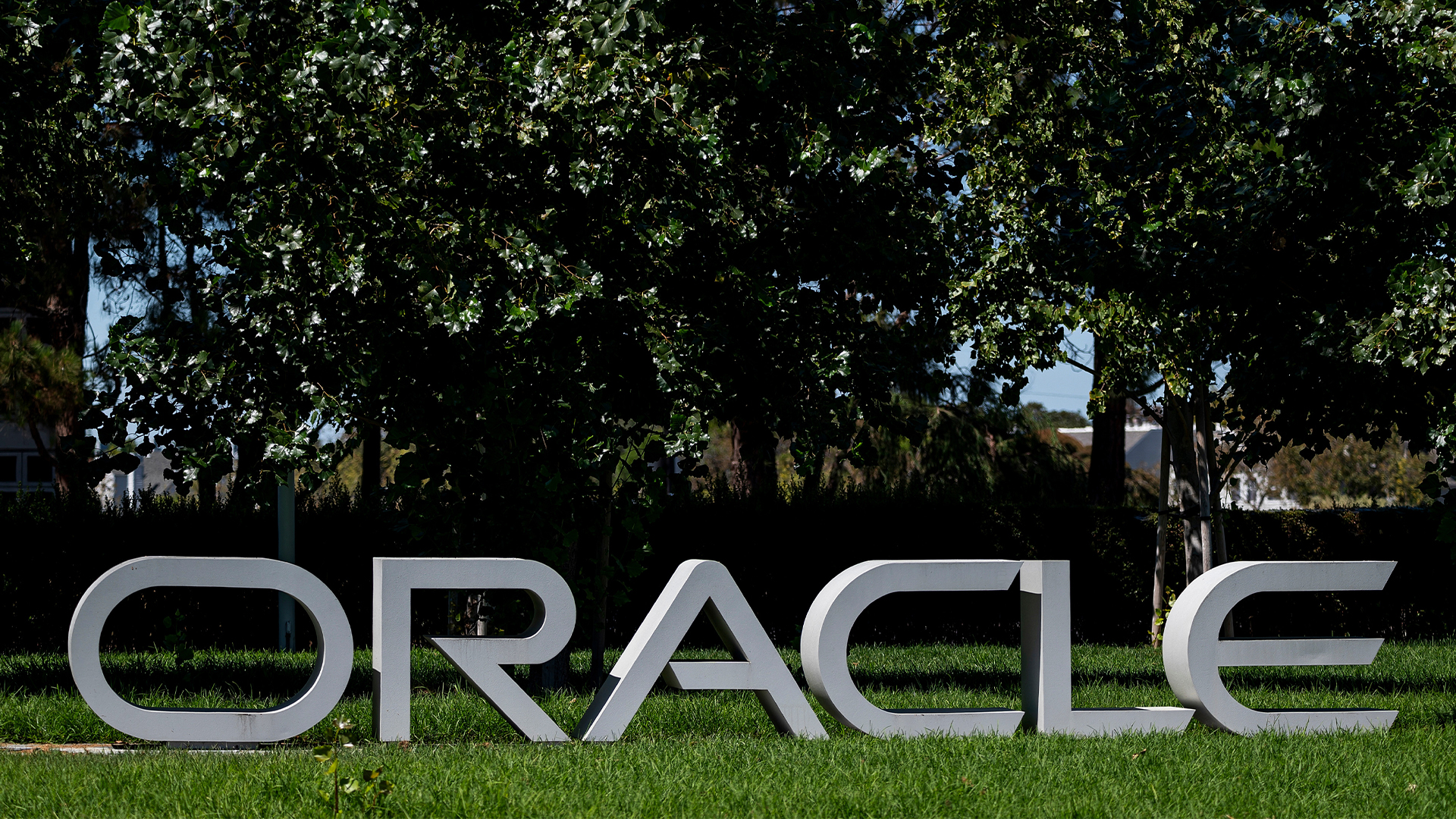‘Many of our long-time rivals are now our partners’: Why Oracle is doubling down on multi-cloud
The firm is focusing heavily on integration with other major cloud providers to drive multi-cloud adoption for customers


Oracle has announced a new partnership with AWS at Oracle CloudWorld 2024, forming part of the firm's wider mission to bolster multi-cloud environments across the enterprise.
The new offering will allow customers to use Oracle Autonomous Database and Oracle Exadata Database Service within AWS environments, providing a connected experience across Oracle Cloud Infrastructure (OCI) and AWS.
Similarly, customers will be able to plug data from their Oracle environments into applications running on specific AWS services, such as Amazon EC2 and Amazon Bedrock.
Oracle’s rallying cry around this announcement has been one of ‘cloud unity’, with other announcements from the firm falling into a similar vein of multi-cloud adoption for its customers.
For example, it also announced the general availability of Oracle Database@Google Cloud in four regions across the US and Europe. This will allow customers to run various Oracle services on OCI in Google Cloud datacenters.
“Many of our long time rivals are now our partners … Microsoft, then Google and now AWS,” Oracle CEO Safra Catz said at her opening keynote for the flagship event in Las Vegas.
“We build our technology so that you - our customers - can run it anywhere you want,” she added, doubling down on the general theme of openness which was a constant throughout the first day keynotes.
Get the ITPro daily newsletter
Sign up today and you will receive a free copy of our Future Focus 2025 report - the leading guidance on AI, cybersecurity and other IT challenges as per 700+ senior executives
Oracle co-founder and CTO Larry Ellison championed a similar message in his keynote speech later in the day, lamenting the fact that many clouds “really don’t work well together” in the current enterprise landscape.
Ellison noted many customers desired interoperability between AWS and Oracle.
Given this seemed “such a good idea,” Oracle moved to establish the partnership, and Ellison went on to formally announce the agreement later in his talk with AWS CEO Matt Garman on stage.
Oracle is building on a sense of interoperability that it’s been working on for some time with these announcements. The Oracle Database@Azure service received a huge update earlier this year, for example, bringing connectivity with Microsoft’s cloud platform to a further five regions globally.
Oracle eyes a practical approach to multi-cloud
While this latest partnership with AWS is largely a continuation of Oracle’s “existing multi-cloud efforts”, according to Gartner analyst Sid Nag, it’s still important to commend the firm on its move towards multi-cloud.
“Any cloud provider that is sort of raising their hand and saying, ‘I'm committed to multi cloud’, and actually doing something about it, gives them … the position of being a thought leader, so I think it’s good,” Nag told ITPro on the ground at CloudWorld.
He also noted the importance of Oracle’s practical approach to multi-cloud.
This approach is, in Nag’s words, a “desired architectural model … I have complex workloads and applications for which my primary cloud provider cannot provide all the capabilities and services, so I lean into a secondary or third tertiary cloud provider.”
This is the desired intent of multi-cloud, Nag added, but the difficult part is the instrumentation of that process. Nag referred to this as “cross-cloud integration framework” - a term used by Gartner and one which accurately describes what Oracle is doing.
“What they're actually doing is not only committing themselves to the multi cloud capability, but it's actually making it real by implementing a cross cloud integration framework,” Nag said.
Oracle’s move towards multi-cloud positions it well in the wider tech landscape, with many providers and end-users increasingly turning to this approach to deliver cost benefits, increased flexibility, and security.

George Fitzmaurice is a former Staff Writer at ITPro and ChannelPro, with a particular interest in AI regulation, data legislation, and market development. After graduating from the University of Oxford with a degree in English Language and Literature, he undertook an internship at the New Statesman before starting at ITPro. Outside of the office, George is both an aspiring musician and an avid reader.
-
 Bigger salaries, more burnout: Is the CISO role in crisis?
Bigger salaries, more burnout: Is the CISO role in crisis?In-depth CISOs are more stressed than ever before – but why is this and what can be done?
By Kate O'Flaherty Published
-
 Cheap cyber crime kits can be bought on the dark web for less than $25
Cheap cyber crime kits can be bought on the dark web for less than $25News Research from NordVPN shows phishing kits are now widely available on the dark web and via messaging apps like Telegram, and are often selling for less than $25.
By Emma Woollacott Published
-
 Say goodbye to walled gardens, Oracle is doubling down on multi-cloud
Say goodbye to walled gardens, Oracle is doubling down on multi-cloudNews Oracle is still focused heavily on driving multi-cloud adoption, doubling down on a message that came out of Oracle CloudWorld 2024 in Las Vegas a few months ago.
By George Fitzmaurice Published
-
 SAP launches sovereign cloud service for UK customers
SAP launches sovereign cloud service for UK customersNews The move makes SAP the latest to roll out a sovereign cloud service for UK customers
By George Fitzmaurice Published
-
 Sovereign cloud demand is “truly global” according to Oracle — and the company is well placed to capitalize on it
Sovereign cloud demand is “truly global” according to Oracle — and the company is well placed to capitalize on itNews Oracle has been at the forefront of sovereign cloud buzz and is keen to offer customers tools to make it happen
By George Fitzmaurice Published
-
 Oracle CloudWorld 2024 live: All the news and updates from day-two
Oracle CloudWorld 2024 live: All the news and updates from day-twoLive Blog It’s day-two at Oracle CloudWorld 2024 - Stay up to date with all the news and announcements at Oracle CloudWorld 2024 in our live coverage from Las Vegas
By George Fitzmaurice Last updated
-
 SuiteWorld 2024 live: All the news and updates as they happen
SuiteWorld 2024 live: All the news and updates as they happenLive Blog ITPro is live on the ground in Las Vegas today for Oracle SuiteWorld 2024 – follow our rolling coverage to keep tabs on all the latest news and announcements
By George Fitzmaurice Last updated
-
 Oracle expands Spanish cloud offerings with $1 billion investment
Oracle expands Spanish cloud offerings with $1 billion investmentNews Oracle said its new cloud region will help financial firms adhere to strict sovereignty and data privacy regulations
By Emma Woollacott Published
-
 Oracle and Google Cloud join forces to streamline multi-cloud deployments
Oracle and Google Cloud join forces to streamline multi-cloud deploymentsNews Cross-Cloud Interconnect will allow customers to combine Oracle Cloud Infrastructure and Google Cloud technologies with no cross-cloud data transfer charges
By Emma Woollacott Published
-
 Public cloud investment surged nearly 20% in 2023 – and analysts predict global spending will reach $1.6 trillion by 2028
Public cloud investment surged nearly 20% in 2023 – and analysts predict global spending will reach $1.6 trillion by 2028News Global public cloud spending is expected to reach $800 billion in 2024 as firms shake off the post-pandemic blues and ramp up AI adoption
By Emma Woollacott Published